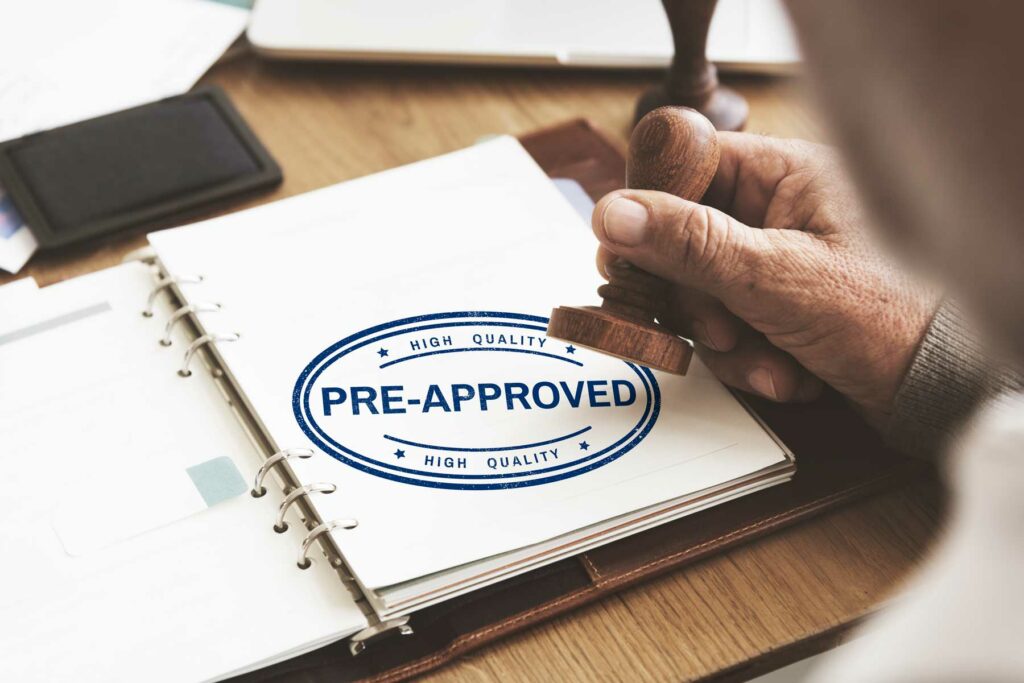While these terms may sound similar, there are big differences between the two. As you begin the process of finding your dream home, you should understand what it will take to get pre-qualified versus pre-approved for a mortgage.

What Does It Mean To Get Pre-Qualified?
When you get pre-qualified, this means a mortgage professional has given you an estimate of how much you can afford. This estimate helps you determine a price range, so you can have a better idea of your budget when searching for homes.
To get pre-qualified, first contact a mortgage loan officer. The loan officer will ask you about your financial situation (income, credit, savings, debt, etc.). Not only is this a great first step toward determining your price range, but this process also tells you if you’re ready for a mortgage. For example, you may need more time to save for a down payment, build up your credit, or pay off some debt.
The mortgage loan officer will assess your financial situation and write up a letter giving you a rough estimate of what you can afford. While the pre-qualification letter is useful, this process is not detailed enough to help you stand out from other buyers. To make yourself stand out as a serious buyer to both realtors and sellers, you need to get pre-approved.
However, this doesn’t mean that you should skip the pre-qualification process altogether. Pre-qualification takes very little time and effort on your part, so it’s worth doing in order to learn important information that will help you move forward.
What Does It Mean To Get Pre-Approved?
A pre-approval takes a closer look at your income, credit history, savings, and other factors. The pre-approval process answers the questions: are you ready for a mortgage? And, how much home can you actually afford?
In order to get pre-approved, a loan officer and underwriter will need to verify your income, savings, credit history, expenses, and debt. To verify this information, the loan officer will request documents such as: your credit report, W2’s, proof of income (pay stubs), employment verification, bank statements, monthly expenses, social security number verification, and other documents like your driver’s license.
During the pre-approval process, the loan officer will highlight areas you need to improve, if any, such as repairing your credit or saving for a down payment. The lender also will begin looking at different mortgage options and programs best suited to your situation.
Once you’re pre-approved, the lender will give you a pre-approved loan amount, also known as your maximum loan amount. This is the maximum amount of money you can borrow for a home loan. In other words, your pre-approved loan amount tells you how much house you can afford. Keep in mind, the pre-approved loan amount is the absolute ceiling, so you want to stay under this budget when choosing a home.
You will also receive a pre-approval letter that you can share to realtors and sellers. This pre-approval letter makes you stand out as a serious buyer, giving you an advantage over other buyers who haven’t been pre-approved.

After you get pre-approved and move toward closing on a home, you still need to officially apply for a mortgage. However, getting a letter of pre-approval helps you close on the mortgage more easily.
Keep in mind, if your financial situation changes (you lose a source of income, take on more debt, or make a large purchase), your loan officer will need to reassess these changes and make adjustments to your maximum loan amount.
Overall, pre-qualification and pre-approval are important steps toward finding your dream home. The whole process may seem overwhelming at times. Fortunately, working with a mortgage professional can greatly help you along the way.


